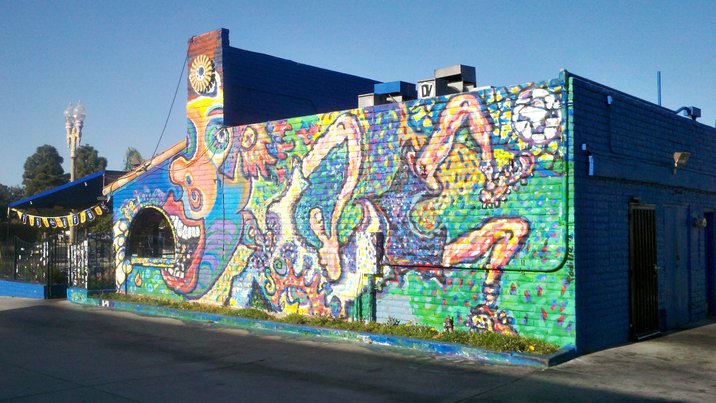So what do we need cameras for, again?
Earlier this weekend I found myself with some nice light and no camera. But a couple months earlier I'd replaced my not-very-smart phone with a Droid 2, so I thought I'd give it a try. I'd previously used it to shoot my whiteboard for research collaborations, but this was my first real photo on it.
It came out surprisingly well, I think. What you see above is the color and exposure as it came from the phone, adjusted only with a high-radius unsharp mask to up the local contrast a little. The sky is a lot more noisy than I would expect from my 40D (especially for a shot at ISO 100 in full daylight), and there was a little bit of chromatic aberration, but much less than I get when I stick the kit lens on the 40D. The aspect ratio is 16:9, the same as a widescreen TV, and a ratio that I'd already often been cropping to. The phone's obviously not going to replace my DSLR, but I no longer have any urge to get a cheap but more portable point-and-shoot for exactly this sort of situation. Is there even still a market for cheap point-and-shoots? If so, why?
Oh, and if you haven't been there, Taco Mesa in Costa Mesa (the site of this photo) is excellent and inexpensive. You can get the standard tacos you get everywhere else, or fancier ones (I had salmon, blackened calamari, and al pastor, which in this case meant grilled pork with pineapple), it's good either way.
Comments:
2011-05-04T00:31:52Z
The same thing more or less happened to me when I got a smart-ish phone that allowed me to upload to Facebook, and on an even larger degree when I got a real smartphone (Droid Incredible). That said, my 3 1/2 year old 7MP point and shoot takes much better pictures, is easier to use, hold, etc.
Recently, my fiance and I picked up a Canon S95, which is as much a jump in quality from the point and shoots we own as the point and shoots are over the cell phone cameras. To answer your question: it's primarily a matter of convenience vs. quality, though modern small DSLRs are pretty damn convenient.
